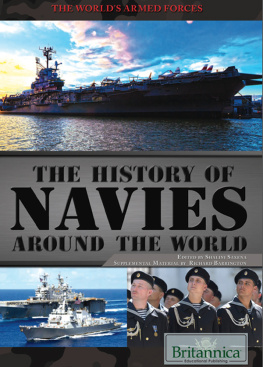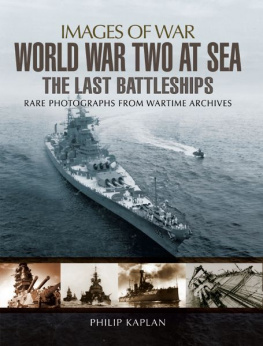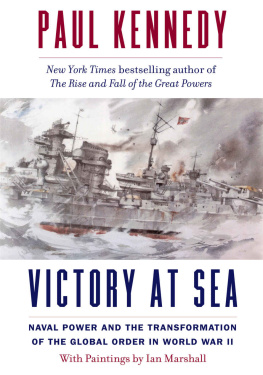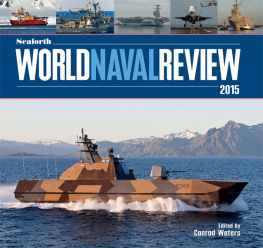

Published in 2014 by Britannica Educational Publishing (a trademark of Encyclopdia Britannica, Inc.) in association with The Rosen Publishing Group, Inc.
29 East 21st Street, New York, NY 10010
Copyright 2014 The Rosen Publishing Group, Inc. and Encyclopdia Britannica, Inc.
Encyclopaedia Britannica, Britannica, and the Thistle logo are registered trademarks of Encyclopdia
Britannica, Inc. All rights reserved.
Distributed exclusively by Rosen Publishing.
To see additional Britannica Educational Publishing titles, go to rosenpublishing.com.
First Edition
Britannica Educational Publishing
J.E. Luebering: Director, Core Reference Group
Anthony L. Green: Editor, Comptons by Britannica
Rosen Publishing
Hope Lourie Killcoyne: Executive Editor
Shalini Saxena: Editor
Nelson S: Art Director
Brian Garvey: Designer
Cindy Reiman: Photography Manager
Introduction and supplemental material by Richard Barrington
Cataloging-in-Publication Data
The history of navies around the world/editor, Shalini Saxena; supplementary material by Richard Barrington. First edition.
pages cm. (The worlds armed forces)
Includes bibliographical references and index.
ISBN 978-1-62275-143-3 (eBook)
1. NaviesHistory. 2. Naval history. I. Saxena, Shalini, 1982 II. Barrington, Richard, 1961
V27.H57 2014
359.009dc23
2013032956
On the cover: (Top) The USS Intrepid, an aircraft carrier built for the United States Navy during World War II, in New York City, where it now serves as a museum. Stuart Monk/Shutterstock.com. (Bottom left) Two ships of the United States Navy, the USS Nassau (left), an amphibious assault ship, and the USS Bulkeley (right), a destroyer, in the Atlantic Ocean. Stocktrek Images/the Agency Collection/Getty Images. (Bottom right) Members of the Russian Navy at a military parade in Sevastopol in Ukraine. Lilyana Vynogradova/Shutterstock.com.
Cover and interior pages (camouflage pattern) iStockphoto.com/EvgeniyDzhulay
CONTENTS
Suez Crisis
CHAPTER 8: HISTORY OF THE UNITED STATES NAVY
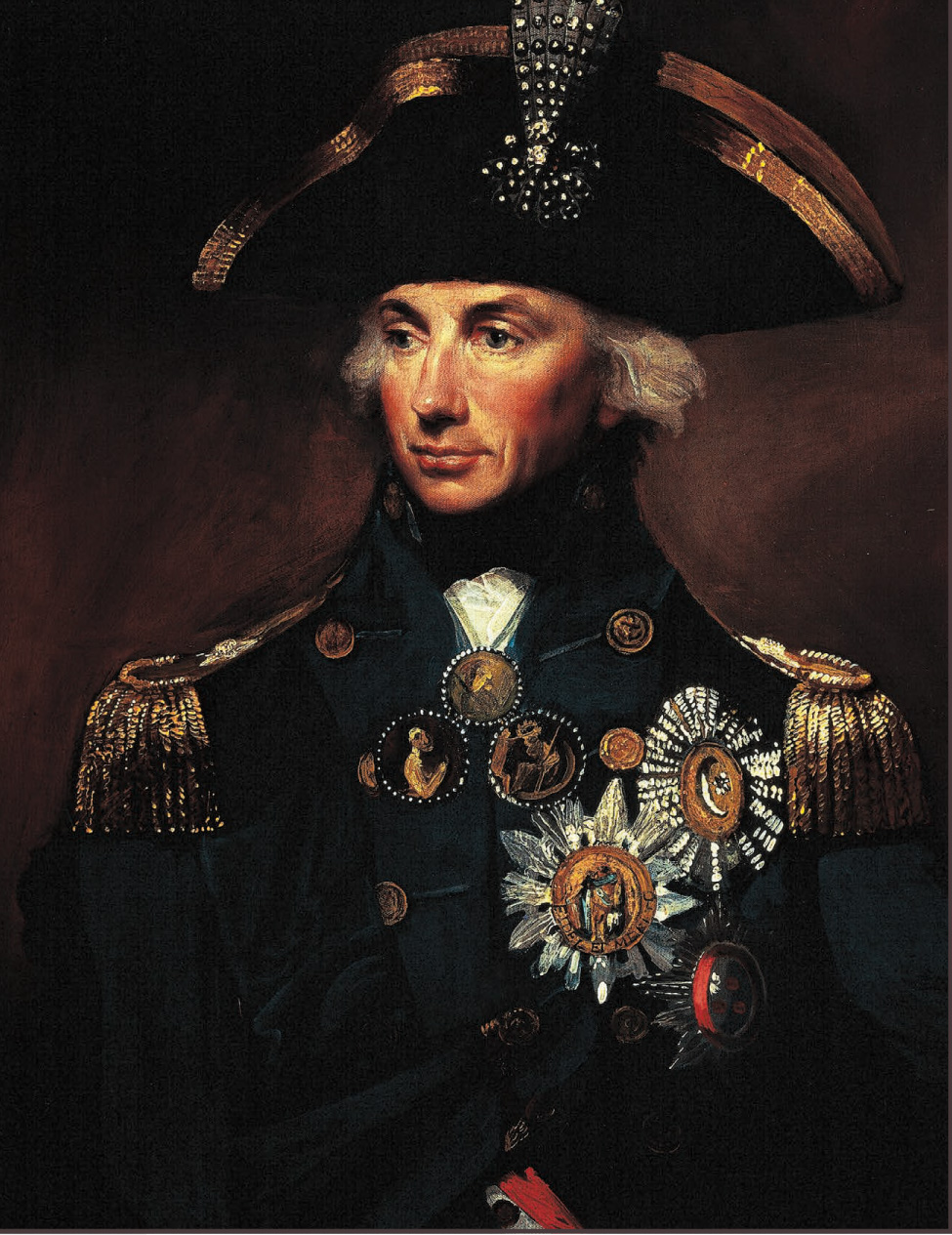
British naval hero Horatio Nelson. Admiral Nelson won a number of important victories during his time with the Royal Navy. DEA/G. Nimatallah/De Agostini/Getty Images
A dm. Horatio Nelson and other great naval commanders of the past might have trouble recognizing todays navies. Its not just the technology that has changed; the role and tactics of todays navies are also vastly different than they were throughout much of naval history, and increasingly the individuals who comprise those navies are also changing.
The technological changes have led to large vessels capable of moving at great speeds, both on and below the surface of the water. Landing craft are designed to move seamlessly from water to dry land, while sophisticated weapons systems combine immense firepower with state-of-the-art radar systems to target enemies on land, on or under the water, or in the air. Meanwhile, satellite positioning systems have made possible navigation with pinpoint precision.
Technology and weapons systems have contributed to the evolution of naval tactics, but so has the nature of modern warfare. On one level, the ability to launch ballistic missiles from ships and submarines makes a navy a valuable part of the nuclear deterrent wielded by global powers. On another level, navies have had to become more agile and versatile. Fighting terrorism and intervening in civil conflicts require the ability to strike swiftly at targets that are often isolated and highly specific. Modern navies have responded to this need with small, high-speed boats and elite fighting units trained for action at sea or on land. In short, as the scope of warfare has become both more global and more localized, navies have had to adapt to both needs.
Even the human face of the navy has evolved over the centuries and can be expected to continue changing in the years ahead. Starting in the second half of the 20th century, some countries around the world began relaxing their policies toward gays and women, allowing gays to serve openly in the military and women to have more prominent roles, including serving in combat. In the 21st century, the United States Navythe worlds largestfollowed suit, adopting policies more accepting of gays in the military and women in combat than in the past.
While the image of a sailor has become increasingly more difficult to pin down, so, too, has the definition of a modern navy. Of course, the core of a navy remains ships and sailors, but todays navies also consist of planes and helicopters, commando units, and remote-control vehicles.
This volume will trace the evolution that has led from oar-driven galley ships to nuclear-powered submarines and beyond. Its pages will chronicle some 5,000 years of naval history, and show how new exploits are continuing to add to naval tradition. In describing the navies of today, this book will profile some prominent national navies from around the world, demonstrating how the challenge of mastering the seas is one that inspires people from a variety of cultures.
Ultimately, naval tradition is not just long-lived but is truly a global phenomenon. Understanding that tradition is both a key to understanding history and a clue to the future.
A navy is the seagoing arm of a nations military forces. In an army, the individual soldier is the fighting unit. In a navy, however, it is the individual ship that makes up a fighting unit. All members of the crew, from the captain on the bridge to the boiler technician, work together in order to make the ship an effective instrument of combat.
On April 2, 1982, the military forces of Argentina seized the Falkland Islands, a British possession in the South Atlantic. Three days later a huge task force of Great Britains Royal Navy sailed from Portsmouth, England, on a mission to recover the islands. Before the end of April the task force had covered the 8,000 miles (13,000 kilometers) between England and the Falklands. Military operations officially began on April 25. Less than 11 weeks later the war was over, and Britain had achieved its goal. Success was made possible by Britains ability to gain and keep control of the seas, fend off air and sea attacks from Argentina, and put combat units ashore.
In all history, said Viscount Bernard Law Montgomery, the nation which has had control of the seas has, in the end, prevailed. This conviction reaffirms a point of view developed by the American naval officer Alfred T. Mahan in 1890. His book The Influence of Sea Power upon History, 16601783 is a survey of British naval power. In it he states that a nation needs a strong industrial base and a powerful navy in order to achieve military supremacy and to extend its commerce around the world. The book was one of the most influential military studies and had a very strong influence on the naval buildup in Europe prior to World War I.
For nearly four centuries Great Britains Royal Navy commanded the sea lanes of the world. During that time Britain lost only one major conflict: the American Revolution. The reason for the loss can in great measure be blamed on inadequate naval power in the face of an alliance of the young United States with France and Spain.

